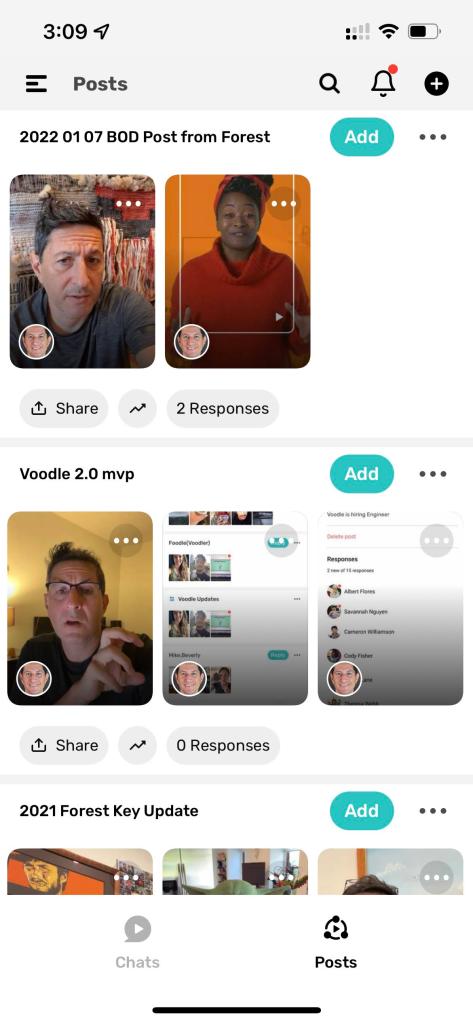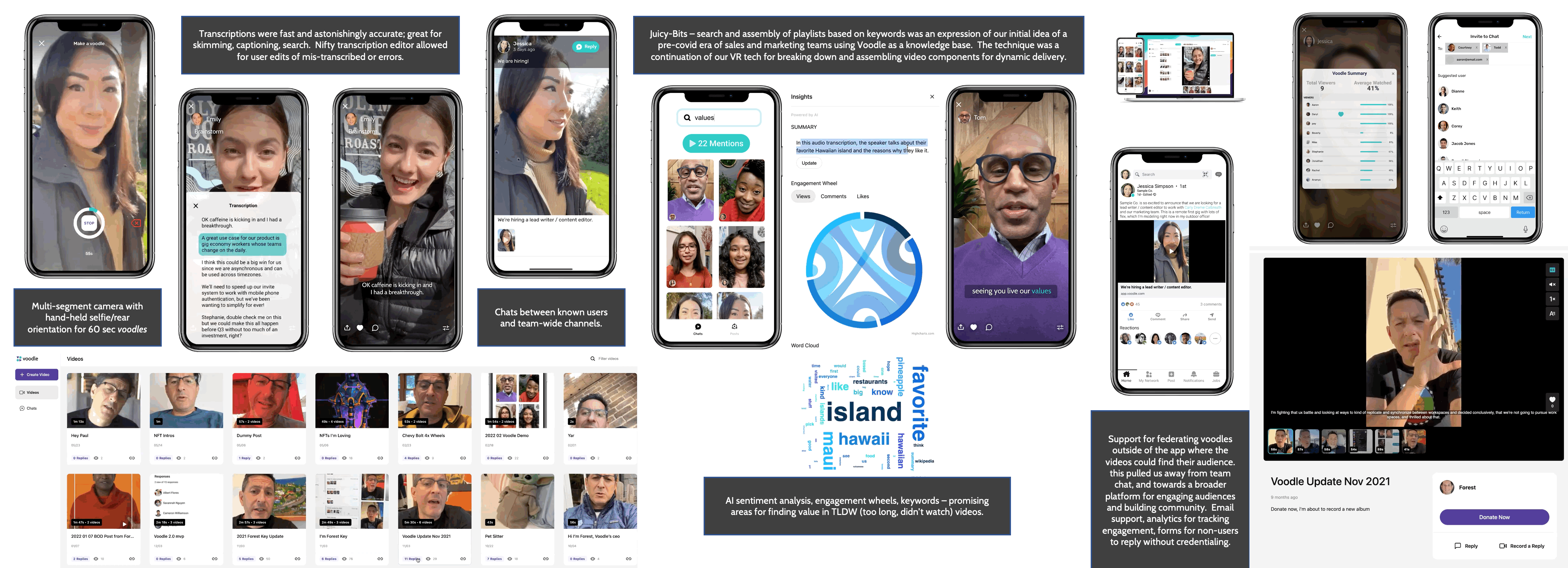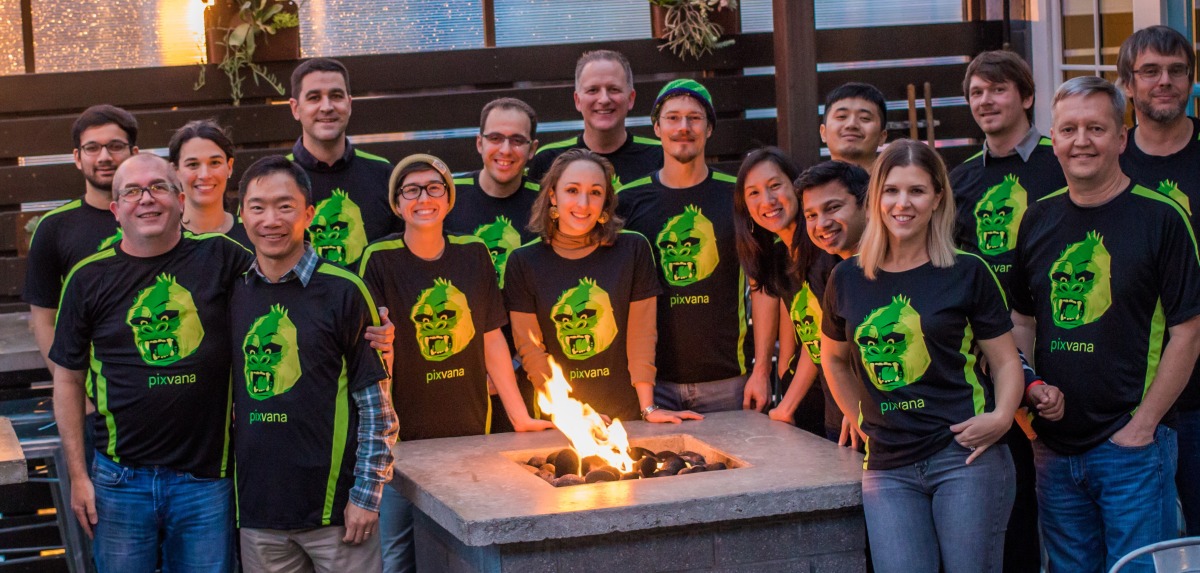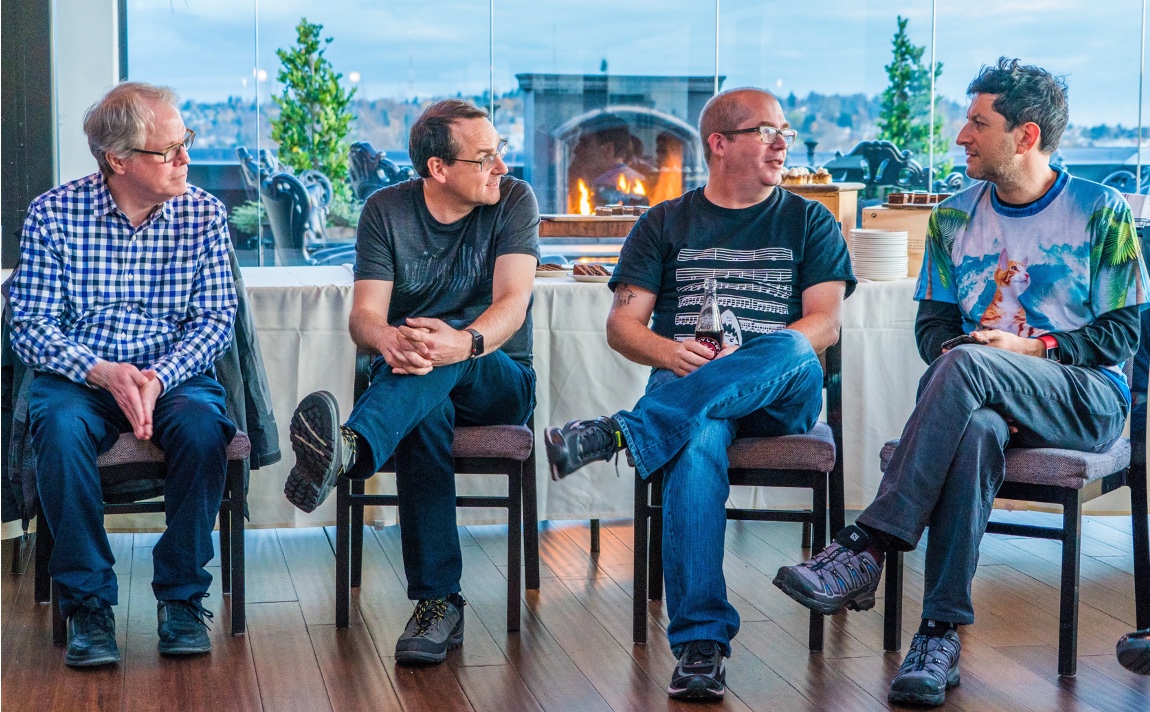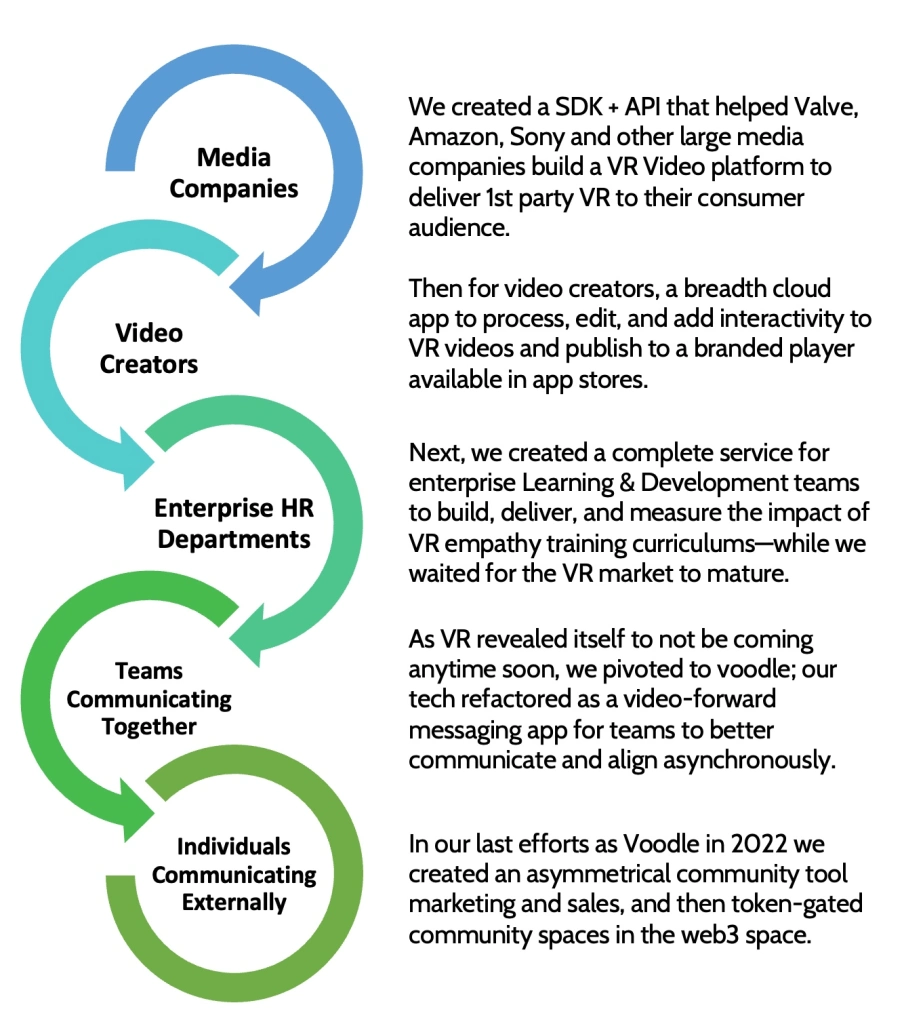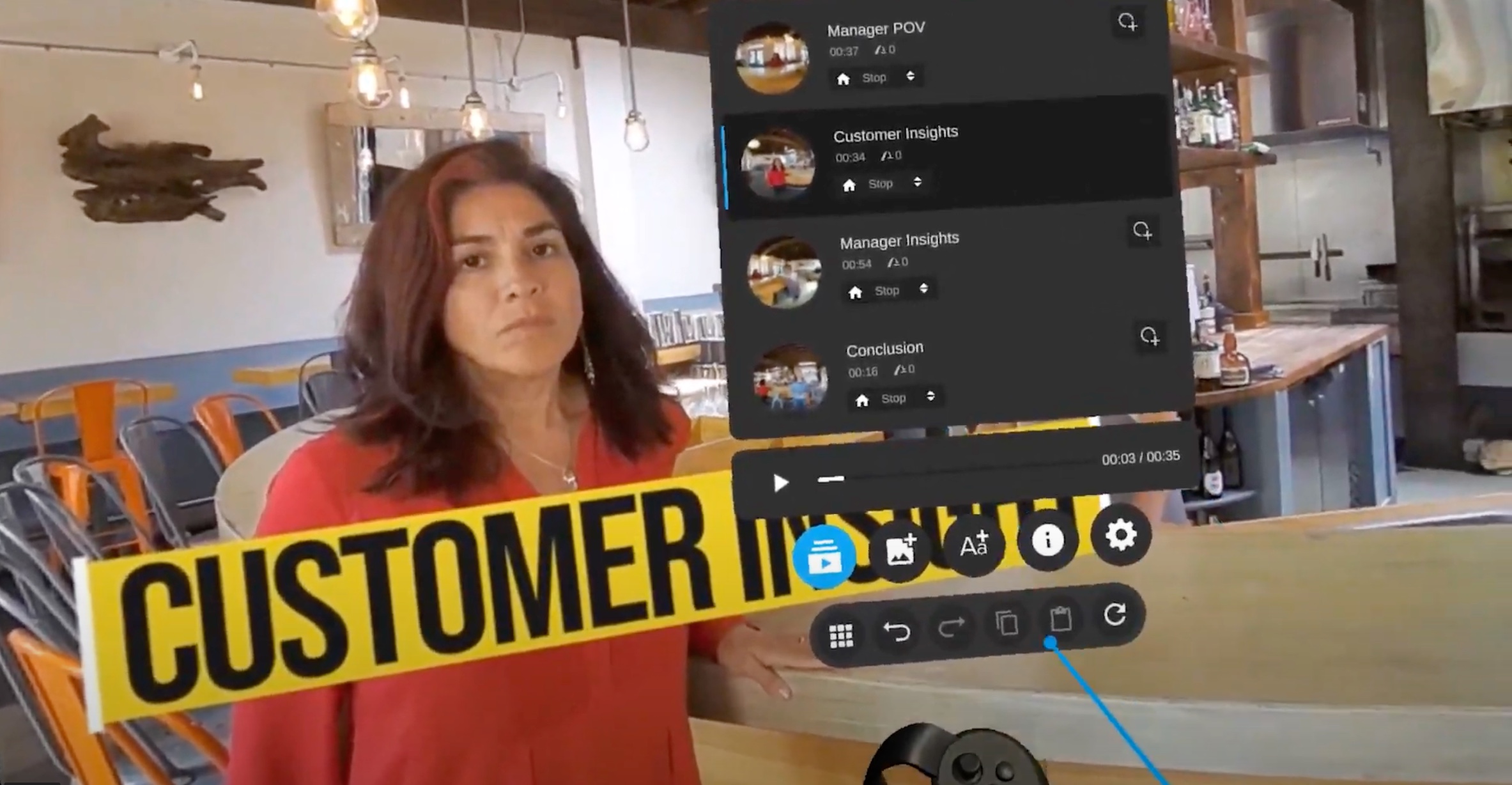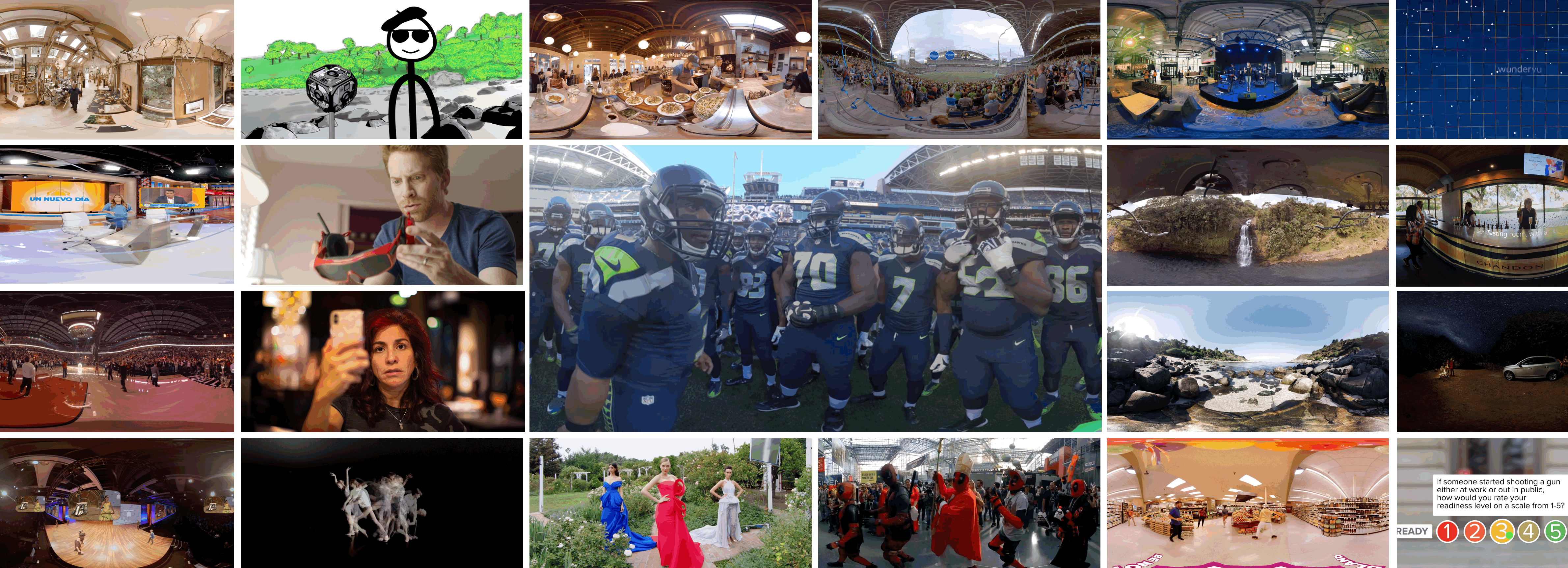Voodle was a tech startup that built a short-video messaging app that launched in 2020 and shuttered in 2022. The initial idea was for a mobile-first “async short video” app that would be “tiktok for work” for sales and marketing teams to talk to each other. First versions launched in summer of 2020 during COVID pandemic conditions, and while 10k+ users tested the app with their teams, the rise and dominance of team messaging activities within Microsoft Teams, Slack, and Google Meet platforms proved too high of a friction for any meaningful adoption of 3rd party apps in this era of the industry. Meaningful integration of Voodle within other apps proved difficult, as the APIs for rich video playback was minimal or not available to 3rd parties.
Voodle evolved to focus on 1-to-many “me-casting” workflows–such as a sales outreach, coaching group, or other special interest space for asymmetrical chat (eg: not everyone participating making videos, rather, most users watching the videos of a main/principal maker). Email notification workflows, analytics for views/engagement, and other more traditional sales/CRM features were added.
The last phase of exploration in summer and fall of 2022 included Web3 token-gated spaces for creators to build audiences around a mixture of NFT, video, text, graphic posts.
Here’s a quick demo from fall 2021, and some screenshots of key UX and features.
